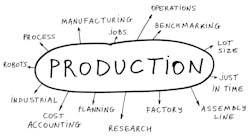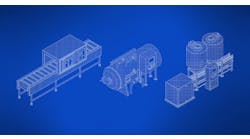The aerospace and defense (A&D) industry is undergoing a significant growth era comprised of constantly evolving material, customer and regulatory dynamics. This shift, paired with the ongoing sector-wide push toward digitization, has many leaders questioning how they can leverage the benefits of technology to future-proof their business strategies.
In the A&D industry (as well as many others) leaders have begun to realize the value and potential of digital twins as a key part of their digital-transformation agenda. In fact, new research shows that A&D enterprises have increased their digital twin investments by 40% in just the past year, and more than 80% of the global A&D sector currently operates digital-twin programs. This indicates that digital twins are at the core of intelligent industry transformation.
When assessing the use of digital twins in the A&D sector, there are several operational, environmental and design benefits, from fostering collaboration across the value chain to improving resource utilization. One such capability is virtual commissioning—the use of modeling and simulation technology to commission automation systems and validate software, system functionalities, and upgrades virtually, before deployment to the real system.
Virtual problem-solving
What makes virtual commissioning a prime example of the potential that lies ahead for digital twins? This process can not only change the way that manufacturers do business, but it represents a shift in the industrial-automation industry, which has been historically slow to innovate.
According to recent reports, commissioning can contribute up to 25% of the lead time for plant engineering and start-up. By virtualizing this process, A&D leaders can—if executed properly—improve their organizational agility and efficiency while preventing environmental damage.
Consider a manufacturing line in a factory producing goods worth $25,000/hour on a three-shift basis. In this scenario, even a two-day delay during production ramp-up of the manufacturing line can result in losses of more than $1 million. Virtual commissioning, however, significantly reduces project delays that can occur during production ramp-up. If this organization were to leverage digital-twin capabilities, manufacturing leadership could identify and solve these issues—virtually—in the office before deployment on-site, thus ensuring a smooth production ramp-up and a minimized risk of economic loss.
Benefits of virtual commissioning
There are several ways that digital twin-enabled virtual commissioning can improve manufacturing operations, including:
· Improved safety: Minimizes manufacturing risks by validating the preventive and mitigation measures implemented in the systems. What’s further, by being able to simulate unsafe scenarios with this technology, manufacturers can achieve better planning and challenge existing safety implementations.
· Software optimization: Enables engineers to validate their functional models before they are deployed, which optimizes the system’s performance, reduces time-to-market, and increases the availability of manufacturing systems.
· Sustainability: Reduces the environmental effects of manufacturing operations and ensures that standard operation does not negatively impact the environment.
· Training and talent: Improves training of production/maintenance personnel by simulating environments with real-system behaviors. This supports a smooth production ramp-up, reduces downtown risks associated with employee onboarding, and decreases response time against critical incidents.
Fostering an intelligent future
The full potential of digital twins has not yet been realized. As the A&D sector continues to experience robust growth and embrace intelligent industry transformation, the possibilities are truly limitless.
By leveraging digital-twin-enabled capabilities such as virtual commissioning, leaders will continue to optimize design, streamline production and operations, lower costs, reduce time to market, and improve safety...all while fostering a more sustainable society.
The future is here, and those who are able to innovate and adapt will stand apart from the competition.


